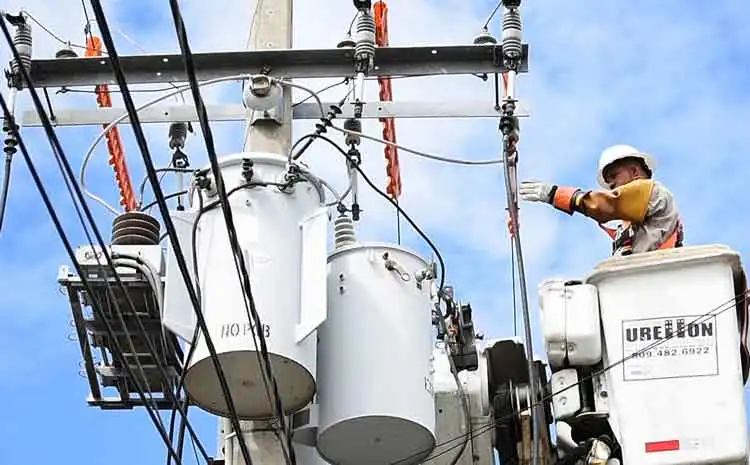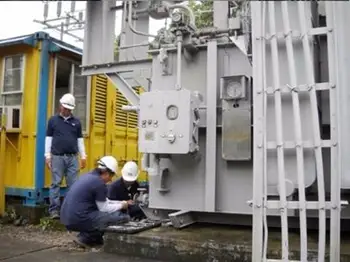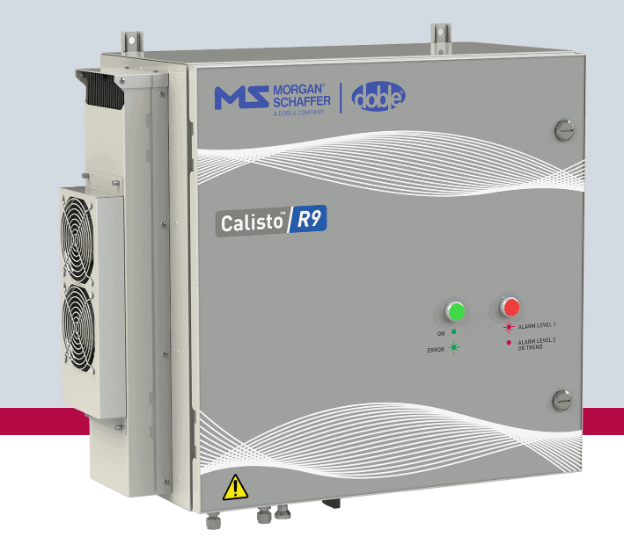Powerline Transformer Explained
By R.W. Hurst, Editor

Power Transformer Maintenance Training
Our customized live online or in‑person group training can be delivered to your staff at your location.

- Live Online
- 12 hours Instructor-led
- Group Training Available
Download Our OSHA 4474 Fact Sheet – Establishing Boundaries Around Arc Flash Hazards

- Understand the difference between arc flash and electric shock boundaries
- Learn who may cross each boundary and under what conditions
- Apply voltage-based rules for safer approach distances
A powerline transformer reduces high voltage from distribution lines to usable service levels. Installed on poles or ground units, they ensure safe electricity delivery, stable voltage regulation, and reliable power flow for residential, commercial, and rural networks across the electric grid.
What is a powerline transformer?
A powerline transformer is a distribution device that converts high-voltage electricity into lower, usable levels for safe and reliable delivery. It:
✅ Reduces high-voltage electricity from distribution lines to safe, usable levels.
✅ Ensures reliable voltage regulation and efficient power delivery to end users.
✅ They are mounted on poles or ground units in residential and rural networks.
The primary function of a powerline transformer is to step down the high voltage transmitted through power lines to a lower voltage suitable for distribution to end-users. This voltage transformation is essential for maintaining the efficiency and safety of the electrical grid. For a broader overview of grid equipment, see our detailed utility transformers guide, which explains their role in large-scale power distribution.
High voltage is used for long-distance transmission to minimize energy losses due to resistance in the wires. However, this high voltage is far too dangerous for direct use in homes and businesses. Power line transformers act as intermediaries, converting the high transmission voltage to lower distribution voltages, typically 120/240 volts for residential customers and higher voltages for commercial and industrial applications. Discover how 3 phase transformers supply commercial and industrial loads with efficient, balanced power.
Electrical Transformer Maintenance Training
Substation Maintenance Training
Request a Free Training Quotation
Power Line Transformer Technical Overview
| Feature | Description |
|---|---|
| Function | Steps down high-voltage electricity from distribution lines to safe service levels |
| Installation | Commonly pole-mounted in residential areas or ground-mounted in rural networks |
| Typical Primary Voltage | 2.4 kV – 34.5 kV (distribution line input) |
| Typical Secondary Voltage | 120/240 V single-phase or 208/120 V three-phase for end users |
| Capacity (kVA Range) | 10 kVA – 500 kVA depending on load requirements |
| Voltage Regulation | Provides stable and efficient voltage for continuous electricity supply |
| Applications | Power homes, small businesses, farms, and light commercial loads |
| Safety Role | Prevents dangerous high voltage from reaching consumer systems |
Frequently Asked Questions
How Does a Powerline Transformer Work?
A powerline transformer operates on the principle of electromagnetic induction. It consists of two or more coils of wire (windings) wrapped around a common magnetic core. The high-voltage electricity from the power lines flows through the primary winding, creating a magnetic field in the core. This changing magnetic field induces a lower voltage in the secondary winding, which is then distributed to consumers.
FREE EF Electrical Training Catalog
Download our FREE Electrical Training Catalog and explore a full range of expert-led electrical training courses.

- Live online and in-person courses available
- Real-time instruction with Q&A from industry experts
- Flexible scheduling for your convenience
The ratio of turns in the primary and secondary windings determines the voltage transformation ratio. For instance, a distribution device like this with 1000 turns in the primary winding and 100 turns in the secondary winding will step down the voltage by a factor of 10. Our article on high-voltage transformers explains how bulk power is transmitted across transmission networks before being stepped down.
What are the Different Types?
There are several types of powerline transformers, each designed for specific applications:
-
Distribution: These are used to step down high voltage from power lines to the voltage levels required for residential and commercial use. They are typically mounted on poles or placed on pads. Learn how a distribution transformer steps voltage down for everyday use, similar to how electrical grid transformers serve local networks.
-
Substation: These are used in electrical substations to step down the voltage from transmission levels to distribution levels. They handle very high voltage and are critical for the intermediate stages of power distribution.
-
Pole-Mounted: Installed on utility poles, these transformers serve residential neighborhoods by converting high voltage from distribution lines to lower voltages. Compare the differences between pole mounted transformers and pad-mounted units to understand installation options available in both rural and urban areas.
-
Pad-Mounted: These are enclosed in secure, ground-level cabinets and used in residential, commercial, and industrial areas where underground power lines are preferred. For a deeper look at design fundamentals, see our resource on transformer components, covering cores, windings, and insulation.
What Safety Features are Incorporated?
Power line transformers include several safety features to ensure reliable operation and protect against potential hazards:
-
Surge Protectors: These devices protect the step-down unit from voltage spikes caused by lightning or other transient events.
-
Pressure Relief Devices: These safety valves release excess pressure within the step-down unit, preventing explosions and ensuring safe operation.
-
Fuses and Circuit Breakers: These components protect the distribution device and connected circuits from overcurrent conditions, isolating faults to prevent damage.
-
Grounding: Proper grounding ensures that any fault currents are safely directed to the ground, reducing the risk of electric shock and equipment damage.
What Maintenance is Required?
Regular maintenance is crucial to ensure the longevity and reliability of power line transformers. This includes visual inspections to check for leaks, corrosion, or physical damage, as well as periodic oil analysis for liquid-filled units. To understand performance and reliability, review condition monitoring in transformers, which details modern diagnostic tools. Additionally, infrared thermography can be used to detect hot spots that may indicate potential problems.
-
Inspection: Routine visual inspections to check for physical damage, oil leaks, and other visible signs of wear.
-
Oil Testing: Insulating oil should be regularly tested for moisture, acidity, and other contaminants to ensure proper insulation and cooling.
-
Electrical Testing: Periodic testing of the windings and insulation resistance to detect potential faults before they lead to failures.
-
Cleaning: Keeping the distribution device and its surroundings free from dust, dirt, and debris ensures proper cooling and prevents overheating.
A power line transformer is vital to the electrical grid, enabling the safe and efficient distribution of electricity from high-voltage power lines to end-users. By understanding its function, type, safety features, and maintenance requirements, we can ensure the reliable operation of this essential device. Regular maintenance and adherence to safety protocols are crucial for maximizing the lifespan and performance of pole-mounted transformers.
Related Articles







